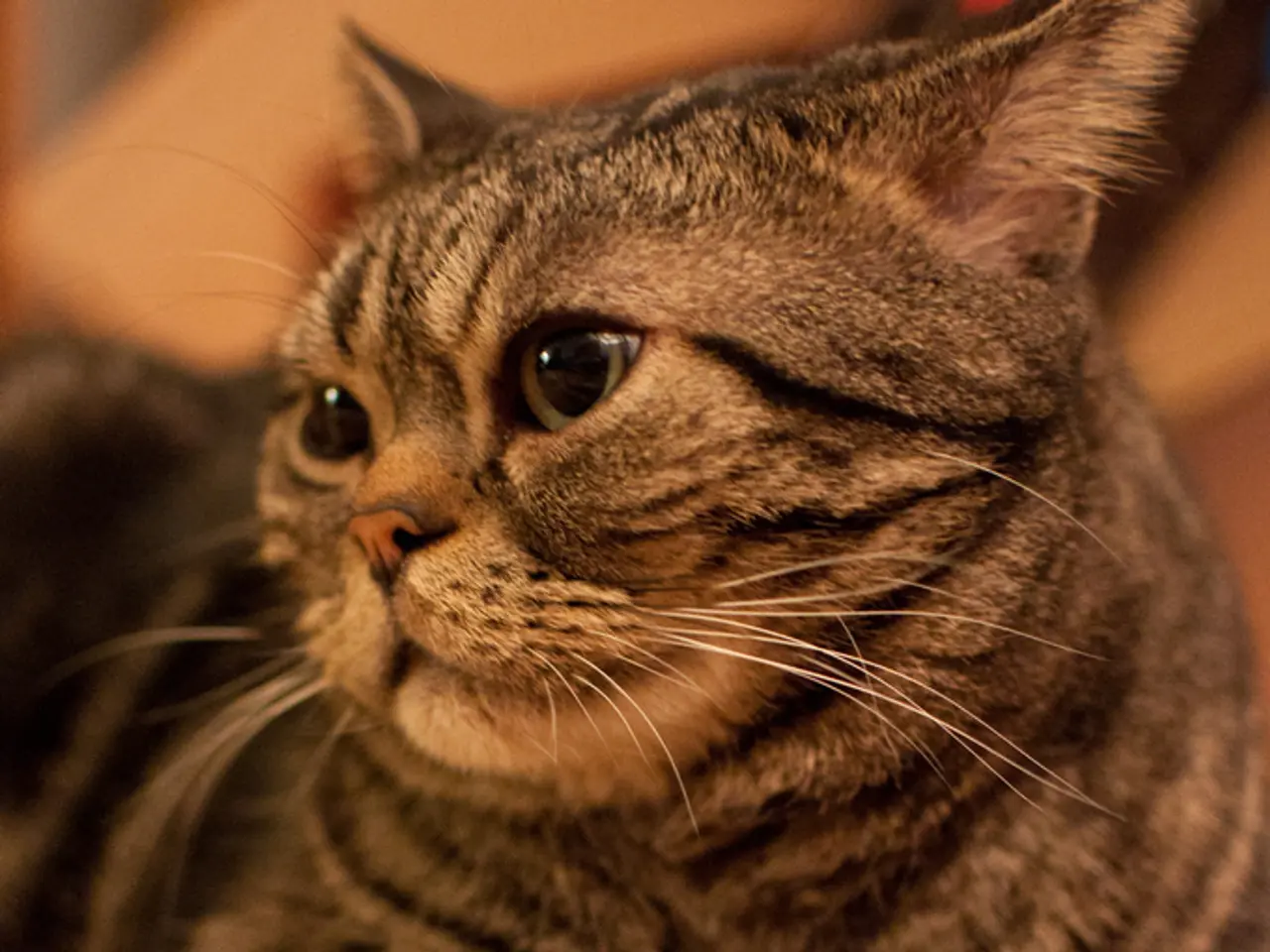Cause of Feline Flaky Skin: Dandruff in Cats Explained
In the feline world, dandruff is a common issue that can affect any cat. This article aims to shed light on the causes, treatments, and preventative measures for dandruff in cats.
Dandruff in cats can be caused by a variety of factors. Poor diet or malnutrition, skin allergies or infections, parasites such as Cheyletiella mites and ringworm fungus Microsporum canis, lack of grooming, environmental factors like dry air, chemicals, and smoke, obesity, and underlying health conditions such as diabetes, cancer, arthritis, or hormonal imbalances are all potential culprits [1][2][3]. Overbathing can also contribute to dandruff by drying out the skin [1].
To treat dandruff, it's essential to address any underlying health issues with the help of a veterinarian. This may involve controlling parasites or infections with appropriate medications, improving diet by providing balanced nutrition, possibly supplemented with omega-3 fatty acids which benefit skin health [1][4], maintaining proper grooming either by the cat itself or through regular brushing, avoiding overbathing and using gentle shampoos if bathing is necessary [1], and modifying environmental factors by reducing exposure to irritants and increasing humidity in dry climates [1].
Prevention is always better than cure, and when it comes to dandruff in cats, this couldn't be truer. Feeding a nutritious, balanced diet that supports skin health is key. Regular grooming to prevent fur and skin buildup is also important. Keeping the cat’s environment clean, well-ventilated, and free from harsh chemicals or smoke is another preventative measure. Excessive bathing should be avoided, and any allergies or health conditions should be promptly monitored and managed with veterinary care [1][3].
It's important to note that some causes of dandruff may indicate serious health issues, so a veterinary checkup is recommended to diagnose and effectively treat the condition [1].
When it comes to brushing, choosing a brush appropriate for your cat's fur type is crucial. Bacterial or fungal infections can disrupt the skin barrier, leading to flaking, redness, and odour in cats. More serious health issues like kidney disease or cutaneous lymphoma can present with skin problems [5]. In some cases, a professional groomer might be needed to manage long fur or matting.
Daily brushing helps distribute natural oils and remove loose flakes in cats. Fleas and lice can irritate a cat's skin, triggering excessive scratching and skin shedding. If left untreated, these skin infections can worsen and spread [6].
Watch for other signs like weight loss, fatigue, or changes in appetite alongside the dandruff. Cheyletiella mites, also known as "walking dandruff," can cause intense flaking in cats and are contagious to other pets [7]. For cats with recurring issues, skin supplements or changes in grooming practices may help.
Topical treatments, like medicated shampoos or sprays, can soothe irritated skin, but only use products recommended by your vet. If your cat's flaky skin is accompanied by other symptoms, a full veterinary exam is the safest route [8].
References:
[1] PetMD. (2021). Dandruff in Cats. Retrieved from https://www.petmd.com/cat/conditions/skin/c_ct_seborrhea_sicca
[2] Hill's Pet Nutrition. (2021). Dandruff in Cats. Retrieved from https://www.hillspet.com/catcare/cat-health/common-cat-skin-problems
[3] BluePearl Specialty + Emergency Pet Hospital. (2021). Dandruff in Cats. Retrieved from https://www.bluepearlvet.com/pet-health-library/dandruff-cats
[4] VCA Hospitals. (2021). Dandruff in Cats. Retrieved from https://vcahospitals.com/know-your-pet/dandruff-in-cats
[5] Cornell Feline Health Center. (2021). Dermatologic Problems in Cats. Retrieved from https://www.vet.cornell.edu/departments-centers-and-institutes/cornell-feline-health-center/health-information/feline-health-topics/dermatologic-problems-cats
[6] ASPCA. (2021). Flea and Tick Prevention and Treatment. Retrieved from https://www.aspca.org/pet-care/virtual-pet-behaviorist/cat-behavior/flea-and-tick-prevention-and-treatment
[7] Banfield Pet Hospital. (2021). Cheyletiella Dermatitis in Cats. Retrieved from https://www.banfield.com/pet-health/resources/diseases-conditions/cheyletiella-dermatitis-cats
[8] PetMD. (2021). Skin Conditions in Cats. Retrieved from https://www.petmd.com/cat/conditions/skin/c_ct_skin_conditions
- Technology in health-and-wellness could provide solutions for monitoring dandruff in cats, as some wearable devices can track various health metrics, potentially detecting early signs of skin issues.
- The recent advancements in skin-care products and research may offer effective solutions for treating dandruff in cats, as they focus on nourishing the skin and addressing underlying causes.
- Understanding the interplay between a cat's environment, nutrition, and health is crucial for maintaining optimal skin health and preventing dandruff, as various environmental factors and dietary elements can impact a cat's wellbeing.




